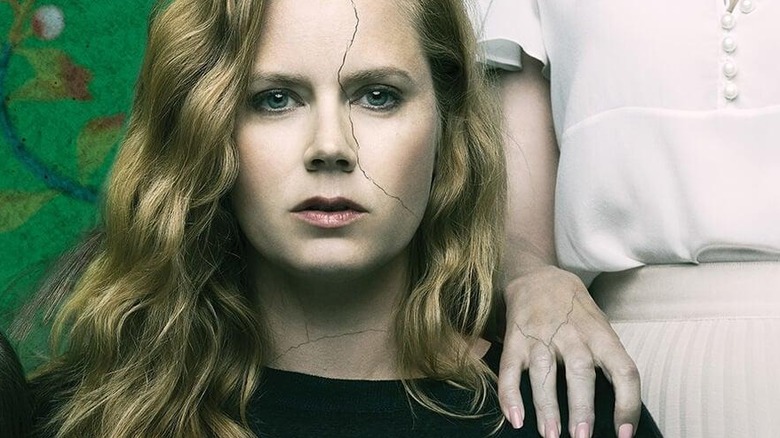
Raise your hand if you're still angry that neither Amy Adams nor Patricia Clarkson won an Emmy for their work on the HBO limited series "Sharp Objects"? No? Just us, sitting here ... still stewing over it a few years later? Fine. Cool.
"Sharp Objects" is one of those shows that lingers within you after you watch it. Or, maybe even malingers within you. Based on the novel of the same name by author Gillian Flynn ("Gone Girl"), "Sharp Objects" is a murder mystery set in a small town, with Amy Adams in the lead role of Camille, a journalist sent to investigate the darkness brewing within her hometown of Wind Gap.
When "Sharp Objects" first aired, there was a lot of talk about its twist ending. The abrupt, daring style in which the killer was ultimately revealed at the very end left some in the audience, even those who read the book, feeling jarred and off-balance. Gillian Flynn even stepped up to give her thoughts on the finale, telling Rolling Stone:
"My thought is, if you've read the books and you've committed to seeing a version of that book, I'm not interested in changing it just because you've read the book. For the most part, people would be outraged if we changed the endings. People who've read the book tend to be very, very loyal to that book, more than anything else I've written."
Fair warning: there are spoilers for "Sharp Objects" ahead. Grab your sweet tea, and let's dive in.
Previously On Sharp Objects
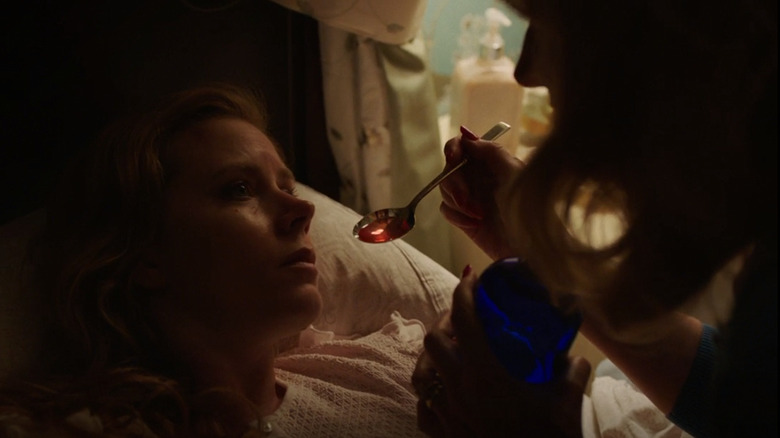
First, a brief recap of how we got to the "Sharp Objects" finale, "Milk." Like the rest of the episodes, this one is titled after one of the self-harm scars on Camille's body, where she has carved a word into her skin. Each of these words seems random, but they hide a subtext. In this case, the word "milk" seems to refer directly to "mother's milk," considering what we've learned about Camille's mother, Adora, in the previous episodes.
Camille has two younger sisters, Marian and Amma. However, Marian died years ago after a chronic illness. While investigating the murders of Ann and Natalie, Camille starts to suspect that Adora is not only capable of being the murderer of the two girls, but that she may have killed Marian as well. Camille has become suspicious that Adora spurred Marian's death along with a toxic concoction, which she fed to her daughter until she died from the chronic poisoning. Eventually, Camille's suspicions about Marian's death are confirmed. Adora has Munchausen syndrome by proxy, known today also as Factitious Disorder, and was responsible for Marian's death.
Knowing this, Camille is left with little doubt as to whether or not her mother could kill others, and knows that she may soon kill again. Adora regularly medicates Amma with the same concoction she used on Marian. Amma and Camille have had a complicated relationship, both of them terrified of their mother, but only Camille is openly defiant.
Finally understanding that Amma has every right to be as dysfunctional as her, Camille decides she must act. With Amma's life on the line, Camille goes back to her mother's house to confront her.
Queen Of The Underworld
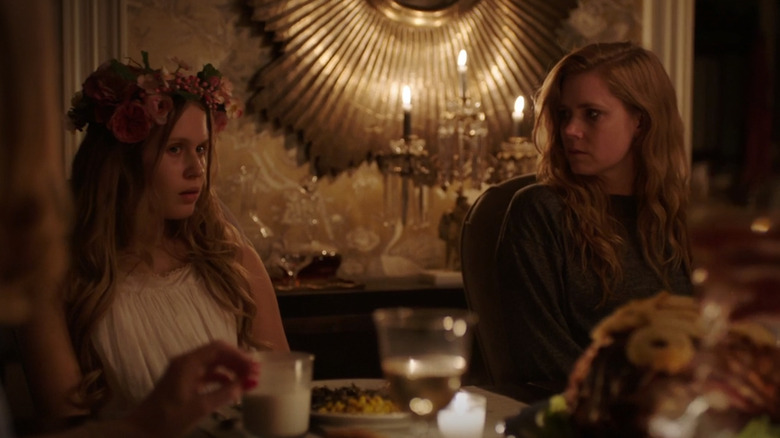
When Camille arrives at Adora's home, her mother, sister, and stepfather are around the table eating dinner. Amma is obviously drugged, clammy with sweat and fever, sitting at the table with a nightgown and a flower crown like some sickly fey creature.
In a brief exchange, Amma tells Camille that she's dressed as Persephone, the Queen of the Underworld, the goddess "in charge of punishment." It's an eerie, otherworldly invocation that makes the entire moment and the scenes that follow seem to invite Camille and the audience into a strange, dark dream.
Before Adora gets the chance to drug Amma again, Camille feigns stomach pains and Adora sweeps in to usher her eldest daughter to bed, swiftly in Nightingale mode. It is here that Camille submits to Adora's treatment. The moment is palpable, with Adams and Clarkson radiating off each other's uneasy energy. Camille, no stranger to self-harm, seems to only need proof of what her mother is doing, and what she has done, but seeks out some of Persephone's punishment for her inability to protect Marian, taking the poisonous dose meant for Amma.
The Bathtub Scene
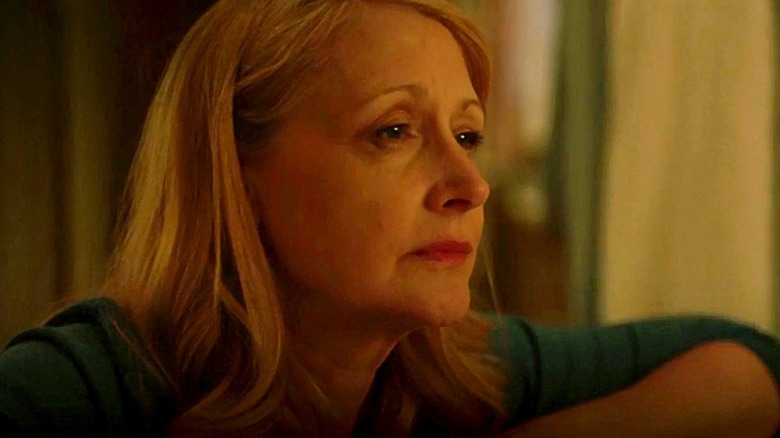
As Adora's potion does its job, Camille spirals into real illness. It's here where "Sharp Objects" shines once more. In many shows with a crime at its center, the height of the action will crescendo around our protagonist detective finally cornering the bad guy to get answers, usually in some sort of fight or chase scene. This is the audience's reward for their note keeping: the truth coming out in an adrenaline fueled way that feels like winning.
However, in "Sharp Objects," Camille's final confrontation with her mother about her suspicions is held in a dimly lit bathroom as Adora kneels next to her sickened daughter in a clawfoot bathtub. There are no raised voices, only soft words and gentle touches that are supposed to look like a caring mother soothing her child, but instead come off as sinister and toying.
Camille, fevered and weak, tries to get the words out about Marian, but only has the strength for clipped accusations caught between bouts of vomiting. Adora denies, denies, in a soft sing-song voice barely above a whisper. Adora even admits her own mother neglected and abused her, which is the slightest hint we have for an explanation about why she is the way she is.
Clarkson is absolutely terrifying in this scene, a monster finally showing itself in the low light. As Adora flicks water at Camille's face a few times, she grins in a way like someone would if they were playing with a baby in a bath. It's not a smile of a warm mother teasing her child, however. It's a smile of victory: Adora's moment of vanquishing Camille's defiance, finally.
Victories
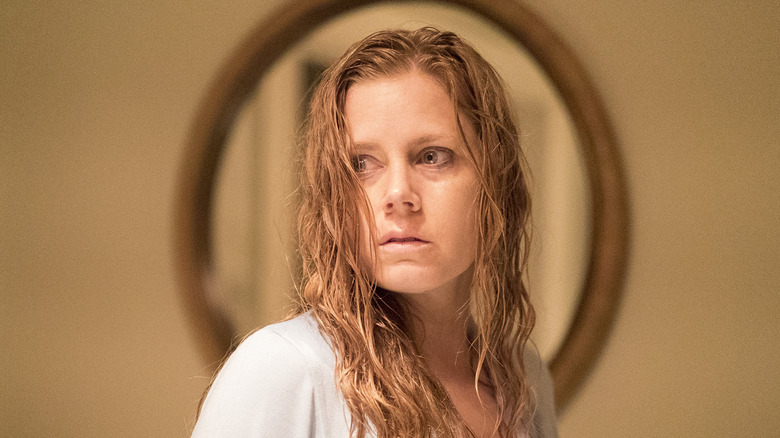
Adora's victory is short-lived. Detective Richard Willis has been doing his own investigating into Adora's background, learning about her from Camille. As the sisters try to figure out a way to get Amma out of the house so they can get the police, Richard comes swooping in just in time to save them both. All the pieces seem to fall into place, especially with Camille and Amma as living evidence of their mother's poisoning. A pair of pliers are also found in the house, and the blood on them is confirmed to be that of one of the murdered girls.
In the end, Marian's murderer will go behind bars, and Amma is safe. In fact, after their mother is sent to jail, Amma moves in with Camille in St. Louis, and the two seem to have a strong relationship after their harrowing ordeal. All seems well, for once. Camille finishes writing about the case and her experience, and seems to have found some sort of peace. Even Marian is no longer haunting Camille's thoughts.
But this victory, too, is short-lived. Camille is approached by the mother of a neighborhood girl whom Amma has befriended, Mae. The girl hasn't come home. Camille assures her that she's probably just with Amma. After their chat, Camille goes into Adora's bedroom and sits next to Amma's dollhouse -- a perfect replica of their family home, the project Amma has been working on for some time to complete. It's spot on, down to the precious ivory tiles on the bathroom floor.
Except, as Camille looks closer, she realizes the tiles in the dollhouse are made of human teeth.
Mama's Little Girl
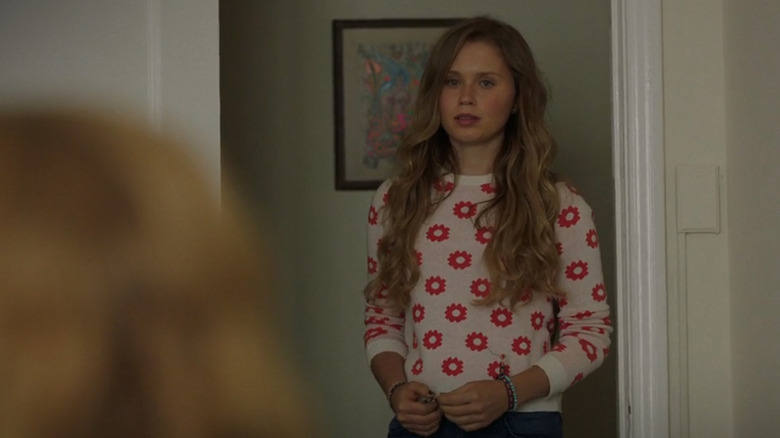
"Don't tell Mama," Amma says, standing in the doorway to her bedroom as Camille fits all the pieces together, realizing she was wrong about her mother. She killed Marian, but she wasn't the one who killed Ann or Natalie. The horrific, staged deaths of the other two girls were all Amma and her friends, posing the girls like dolls. Amma was the one responsible for pulling the teeth of her victims to use in her dollhouse.
And just like that, "Sharp Objects" ends with a cut to black, leaving the audience stunned, trying to process everything as the credits roll. In another interesting style choice, the post-credit scenes reveal flashes of the murders Amma committed, confirming the kills. Amma was viciously jealous of Ann and Natalie, two people whom Adora gave special attention to.
That jealousy seemingly passed from Adora to Camille in the worst way. In quick bursts of frames, we see that Amma killed Mae earlier, all on her own. Mae was admiring of Camille's career in a way that Amma found threatening, so she had to go. Jean-Marc Vallée, director of the "Sharp Objects" finale, even said that the dollhouse floor wasn't complete, so Amma had to keep killing.
This Is Horror
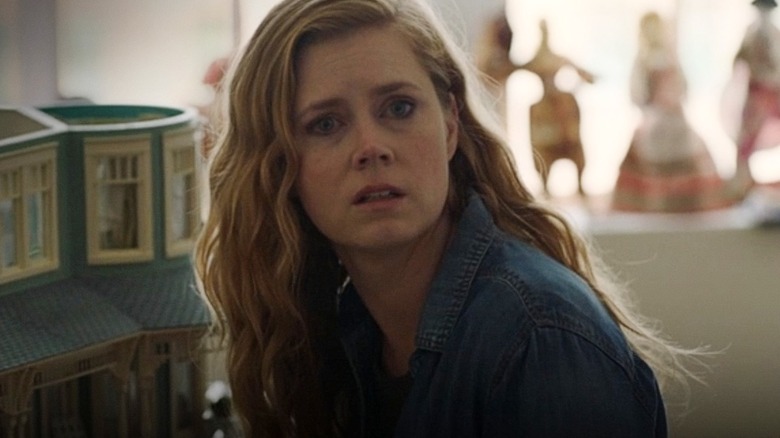
Gillian Flynn writes crime thrillers. Her novels check those boxes. There's always a murder, a mystery, and secrets to uncover to get to the truth (though not necessarily in that order). But Flynn's work has a darkness and edge to it that we've only seen in another genre -- horror.
"Sharp Objects," "Dark Places," and "Gone Girl" are all, at their very core, horror stories in the shape of detective tales. "Gone Girl" isn't so much about a woman going missing as it is about a giant spider luring a small man into a trap designed for him. The catalyst event in "Dark Places" feels more akin to "The Amityville Horror" or "The Texas Chainsaw Massacre" than a Sherlock Holmes mystery.
"Sharp Objects" is no different. Despite being grounded firmly in reality, here there be monsters. The show offers visuals in the form of mysterious ghostly women in the woods and body horror involving teeth and words carved into flesh. It even blatantly equates Adora to a potion-brewing witch, luring children to their deaths. To top it all off, the reveal that Amma was the one behind the murders all along in the very last second of the show is exactly like watching a scary movie and seeing the monster pop back up one last time in a flash just as our hero thinks they're safe.
That's part of the appeal of Flynn's works. There's no magic needed. These are the things people are able to do to hurt one another. In our world, what is a vampire or werewolf compared to a mother who can poison her own child to make herself feel better? No haunting can compete with the sad, self-destructive behaviors of a girl grieving her sister. And really, is anything scarier than a gang of mean girls?
The last moment that we see Camille on screen, clutching the tooth of a dead girl, staring at her sister in betrayal and confusion? That's skin-crawling. And the immediate cut to black after Amma's final words offer no relief, only the urge to scream as the credits roll.
"Sharp Objects" is available to stream now on HBO Max.
Read this next: The 15 Best Anthology TV Series Ranked
The post Sharp Objects Ending Explained: The Truth Hurts appeared first on /Film.
from /Film https://ift.tt/3DmElbY
